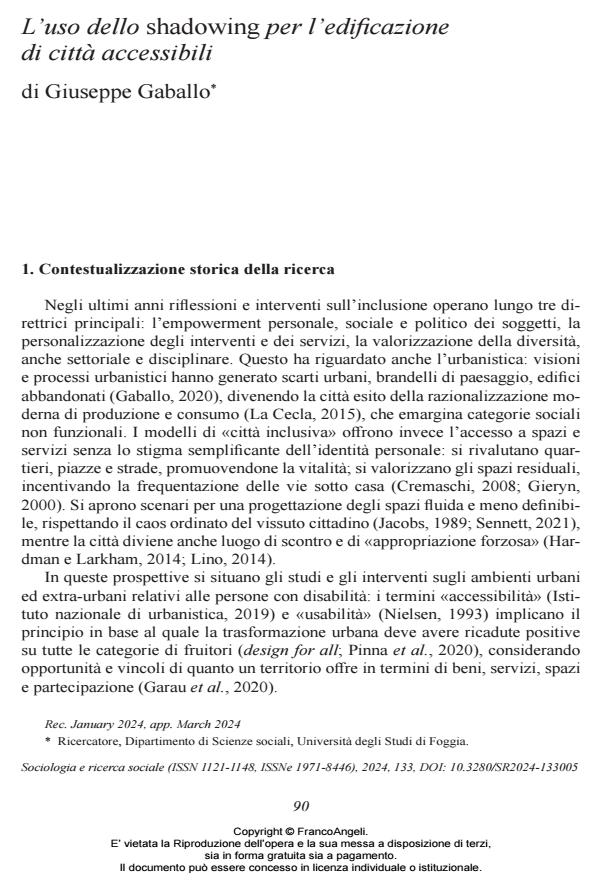L’uso dello shadowing per l’edificazione di città accessibili
Titolo Rivista SOCIOLOGIA E RICERCA SOCIALE
Autori/Curatori Giuseppe Gaballo
Anno di pubblicazione 2024 Fascicolo 2024/133
Lingua Italiano Numero pagine 27 P. 90-116 Dimensione file 269 KB
DOI 10.3280/SR2024-133005
Il DOI è il codice a barre della proprietà intellettuale: per saperne di più
clicca qui
Qui sotto puoi vedere in anteprima la prima pagina di questo articolo.
Se questo articolo ti interessa, lo puoi acquistare (e scaricare in formato pdf) seguendo le facili indicazioni per acquistare il download credit. Acquista Download Credits per scaricare questo Articolo in formato PDF

FrancoAngeli è membro della Publishers International Linking Association, Inc (PILA)associazione indipendente e non profit per facilitare (attraverso i servizi tecnologici implementati da CrossRef.org) l’accesso degli studiosi ai contenuti digitali nelle pubblicazioni professionali e scientifiche
Reflections on inclusion now shift attention from rights to strategies that strengthen individuals, valuing diversity and interdisciplinarity. This is evident in the field of urban redevelopment, where expressions such as just city and acces- sibility find a counterpart in concrete research-intervention experiences. Among these, the Accessibility Plan of Lecce stands out, where the technique of shad- owing sheds light on the various facets of the lived experience of disadvantaged groups, enhancing their empowerment during urban redevelopment and placing the researcher in the position of self-examination as both subject and object of research, defining them as «responsible» for social transformations.
Giuseppe Gaballo, L’uso dello shadowing per l’edificazione di città accessibili in "SOCIOLOGIA E RICERCA SOCIALE " 133/2024, pp 90-116, DOI: 10.3280/SR2024-133005